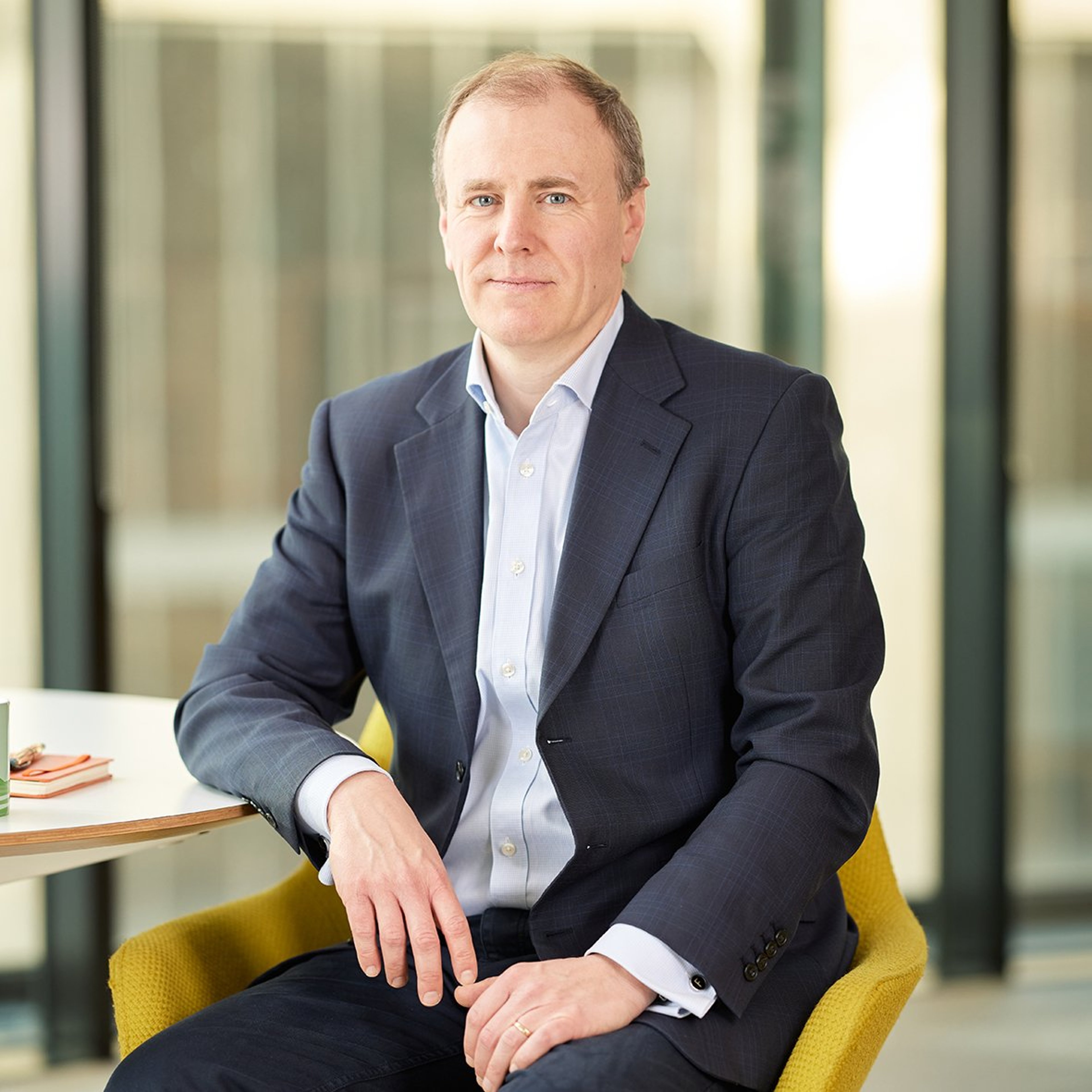
All investment strategies have the potential for profit and loss, your or clients capital may be at risk. This paper is intended solely for the use of professional investors and should not be relied upon by any other person. It is not intended for use by retail clients.
Companies that can compound their earnings at steady rates for long periods are relatively unusual. It’s one thing for a company to deliver 10 per cent growth for a couple of years. But to deliver that rate for a decade or more? That’s rare.
These durable compounders are worth searching for. Stock markets tend to be good at discounting the next one or two years of earnings, but less good at taking the long-term view. The result is that steady compounders are often a source of excess returns. The question is, how do we find them?
After many years of searching, I’ve come to the belief that one of the strongest signals we receive as investors is also one of the oldest: dividend growth. This paper is all about why dividend growth signals steady compounding.
Before we start, it’s vital to remove a potential source of confusion. Dividend growth is not the same as dividend yield. Stocks with high dividend yields (think British Telecom, with a 6 per cent yield) are targeted by value managers who try to generate returns by buying companies with low price-earnings (PE) multiples and high yields.
Dividend growth, by contrast, is pursued by growth managers targeting companies with strong prospects for growing their cashflow across the ups and downs of economic cycles. These are companies like L’Oréal and Atlas Copco, with durable competitive advantages and high returns on capital, which are reinvesting a portion of their earnings for future growth while consistently paying dividends to shareholders.
As the name suggests, dividend growth is very much a growth strategy, albeit ‘core-growth’ rather than ‘high-growth’. It’s about long-term steady compounding.
This style is probably best-known in the US, where there are long-established funds such as Vanguard’s Dividend Growth Fund, launched in 1992, which has almost $50bn of assets under management today.

The dividend growth wish list
The connection between dividend growth and long-term compounding can be summarised in a few short sentences:
If a company is willing and able to commit to growing its dividend for many years into the future, across the ups and downs of economic cycles, it must possess several attributes. These same attributes significantly raise the odds of it delivering long-term compounding in its earnings. This compound growth in earnings and dividends is likely to drive outperformance of the wider market over time.
Below I’ve spelled out several of these attributes in more detail. I like to think of them in three groups, each of which has characteristics that allow a company to pay dividends today, through downturns and into the future:
- Today
This group includes a return on invested capital (ROIC) well above the cost of capital, generating the profits required to pay shareholders. Those profits must then be converted into genuine free cash flow, and managers must display capital allocation discipline when deciding how much the company will reinvest and how much it will allow for dividends. - Through downturns
If a company’s pay-outs are too high and profits subsequently fall, the dividend will have to be cut. A commitment to paying out during tough cycles, therefore, requires a prudent pay-out ratio. Companies also need a strong balance sheet to remove the risk of cash calls threatening the dividend. They should remain solidly profitable at the trough – even in a deep recession they should not make losses. - Into the future
To support continued increases in its dividend, the company should have a long runway for growth. It must also be reinvesting at good returns and working well organisationally – it should be confident in its ability to execute on opportunities in the long term, with its flywheel humming, so to speak. And it should be managed with a
long-term mindset.
Attributes required for a company to commit to dividend growth
Look down this list and you’ll realise it is a compelling set of signals for long-term compounding of earnings, as well as dividends. Essentially then, when a company commits to paying a growing dividend for the long-term, it is sending shareholders a strong signal that it could also be a long-term ‘steady compounder’.
This wish-list might make it seem like picking these companies is a tick box exercise; that is not the impression I want to give. Although commitment to dividend growth is a strong signal of steady compounding, it is not an outright guarantee.
Some companies commit to paying a dividend they can’t afford, or which they can’t realistically hope to grow. As experienced stock pickers, we need to make a judgment about whether a company genuinely possesses the qualities outlined above. Assuming our analysis is thorough, this will help us maximise the chance of long-term returns.
Examples from experience
We can point to multiple companies that we have owned for our clients which have been willing and able to commit to growing their dividends for a long time and gone on to grow their earnings per share (EPS) very nicely.
One such company which displays our desired attributes is L’Oréal, the beauty conglomerate. Our analysis of and meetings with the business over the years have consistently reinforced our conviction in its ability to pay out dividends and thus compound. It even pays a bonus to shareholders that have been on its register for
a long time.
The company earns a return on invested capital well above its cost of capital: typically, in the percentage range of mid-to-high-teens. It converts an average of 100 per cent of earnings into free cash flow and has a prudent payout ratio of around 50 per cent of earnings. Indeed it meets every attribute on our wishlist.
The graph below shows its outperformance compared to global equities (MSCI ACWI):
As we can see, L’Oréal’s compound annual growth rate (CAGR) has been four points higher than MSCI ACWI since 2000. By compounding its earnings at this rate for the past 22 years, it has delivered total returns well above global equity markets.
Interestingly, an investor could have paid a PE multiple of 101 for L’Oréal in 2000 and it would still have outperformed; such is the power of its long-term compounding.
What about research?
Aside from company examples, one important reason for our faith in this idea is that it’s backed up by academic research.
One commonly cited example is a paper by Harvard Business School professor John Lintner, written in 1956 but still relevant today. Lintner studied nearly 200 dividend decisions by American companies and interviewed management boards to understand their motivations for raising or cutting pay-outs. He observed that companies were careful to increase their dividends only if they believed earnings had permanently increased.
This finding supports the argument that dividends contain important information about a firm’s prospects – signalling strongly that earnings can be expected to grow in the years ahead.
Another noteworthy study in this area is by University of Pennsylvania professor R. Richardson Pettit, carried out in 1972.
Pettit researched more than 600 dividend announcements by US companies and calculated the relationship between those and their share price performance. After adjusting for market moves, he found a strong positive correlation between dividend increases and outperformance.
These results have been replicated by numerous studies over the years and are a foundation stone of the investment style.
What’s our edge?
So, there’s plenty of research supporting the argument outlined above. But what can the Global Income Growth (GIG) team bring to the table that’s different from other dividend growth managers?
The first string to our bow is that we are active managers. Passive managers targeting dividend growth are effectively screening for companies that have provided steadily growing dividends in the past – this leaves room for howlers. Take General Electric, for example. This company had a long track record of increasing shareholder
pay-outs… until it died.
A backward-looking approach also ignores up and coming dividend growth stocks. Apple has been one of our biggest winners since we bought it for clients a decade ago, shortly before it started paying dividends. It wouldn’t have shown up in passive analysis because it didn’t have a historic record of dividend growth.
As active managers, we should be able both to avoid the howlers and identify future winners. We can add value both ways.
Another string to our bow is our repeatable investment process, honed over the past decade-plus. We also benefit from working at a firm dedicated to growth investing. But the strongest advantage, I would argue, is our unusually long time-horizon. Many of our investments have been portfolio holdings for more than a decade.
Dividend growth requires patience. It’s about long-term compounding at 10 per cent per annum or more, rather than bursts of quarterly earnings. As long-term investors, Baillie Gifford’s institutional advantages are deeply relevant to this investment style.
Read more from James in his companion article, How steady compounding outperforms in the long term.
|
2019 |
2020 |
2021 |
2022 |
2023 |
|
|
Global Income Growth Composite |
27.8 |
18.9 |
19.2 |
-17.1 |
20.0 |
|
Responsible Global Equity Income Composite* |
28.7 |
18.0 |
20.7 |
-17.4 |
22.5 |
|
MSCI ACWI Index |
27.3 |
16.8 |
19.0 |
-18.0 |
22.8 |
|
1 year |
5 years |
10 years |
Since inception |
|
|
Global Income Growth Composite |
20.0 |
12.5 |
8.0 |
N/A |
|
Responsible Global Equity Income Composite* |
22.5 |
13.2 |
N/A |
13.2 |
|
MSCI ACWI Index |
22.8 |
12.3 |
8.5 |
12.3 |
*Inception date: 31 December 2018. Source: Baillie Gifford & Co and MSCI. USD. Returns have been calculated by reducing the gross return by the highest annual management fee for the composite.
Past performance is not a guide to future returns.
Legal notice: MSCI makes no express or implied warranties or representations and shall have no liability whatsoever with respect to any MSCI data contained herein. The MSCI data may not be further redistributed or used as a basis for other indexes or any securities or financial products. This report is not approved, endorsed, reviewed or produced by MSCI. None of the MSCI data is intended to constitute investment advice or a recommendation to make (or refrain from making) any kind of investment decision and may not be relied on as such.
Risk factors
The views expressed should not be considered as advice or a recommendation to buy, sell or hold a particular investment. They reflect opinion and should not be taken as statements of fact nor should any reliance be placed on them when making investment decisions.
This communication was produced and approved in Janurary 2024 and has not been updated subsequently. It represents views held at the time and may not reflect current thinking.
All investment strategies have the potential for profit and loss, your or your clients’ capital may be at risk. Past performance is not a guide to future returns.
This communication contains information on investments which does not constitute independent research. Accordingly, it is not subject to the protections afforded to independent research, but is classified as advertising under Art 68 of the Financial Services Act (‘FinSA’) and Baillie Gifford and its staff may have dealt in the investments concerned.
All information is sourced from Baillie Gifford & Co and is current unless otherwise stated.
Important Information
Baillie Gifford & Co and Baillie Gifford & Co Limited are authorised and regulated by the Financial Conduct Authority (FCA). Baillie Gifford & Co Limited is an Authorised Corporate Director of OEICs.
Baillie Gifford Overseas Limited provides investment management and advisory services to non-UK Professional/Institutional clients only. Baillie Gifford Overseas Limited is wholly owned by Baillie Gifford & Co. Baillie Gifford & Co and Baillie Gifford Overseas Limited are authorised and regulated by the FCA in the UK.
Persons resident or domiciled outside the UK should consult with their professional advisers as to whether they require any governmental or other consents in order to enable them to invest, and with their tax advisers for advice relevant to their own particular circumstances.
Financial Intermediaries
This communication is suitable for use of financial intermediaries. Financial intermediaries are solely responsible for any further distribution and Baillie Gifford takes no responsibility for the reliance on this document by any other person who did not receive this document directly from Baillie Gifford.
This communication is suitable for use of financial intermediaries. Financial intermediaries are solely responsible for any further distribution and Baillie Gifford takes no responsibility for the reliance on this document by any other person who did not receive this document directly from Baillie Gifford.
Europe
Baillie Gifford Investment Management (Europe) Limited provides investment management and advisory services to European (excluding UK) clients. It was incorporated in Ireland in May 2018. Baillie Gifford Investment Management (Europe) Limited is authorised by the Central Bank of Ireland as an AIFM under the AIFM Regulations and as a UCITS management company under the UCITS Regulation. Baillie Gifford Investment Management (Europe) Limited is also authorised in accordance with Regulation 7 of the AIFM Regulations, to provide management of portfolios of investments, including Individual Portfolio Management (‘IPM’) and Non-Core Services. Baillie Gifford Investment Management (Europe) Limited has been appointed as UCITS management company to the following UCITS umbrella company; Baillie Gifford Worldwide Funds plc. Through passporting it has established Baillie Gifford Investment Management (Europe) Limited (Frankfurt Branch) to market its investment management and advisory services and distribute Baillie Gifford Worldwide Funds plc in Germany. Similarly, it has established Baillie Gifford Investment Management (Europe) Limited (Amsterdam Branch) to market its investment management and advisory services and distribute Baillie Gifford Worldwide Funds plc in The Netherlands. Baillie Gifford Investment Management (Europe) Limited also has a representative office in Zurich, Switzerland pursuant to Art. 58 of the Federal Act on Financial Institutions (“FinIA”). The representative office is authorised by the Swiss Financial Market Supervisory Authority (FINMA). The representative office does not constitute a branch and therefore does not have authority to commit Baillie Gifford Investment Management (Europe) Limited. Baillie Gifford Investment Management (Europe) Limited is a wholly owned subsidiary of Baillie Gifford Overseas Limited, which is wholly owned by Baillie Gifford & Co. Baillie Gifford Overseas Limited and Baillie Gifford & Co are authorised and regulated in the UK by the Financial Conduct Authority.
Hong Kong
Baillie Gifford Asia (Hong Kong) Limited 柏基亞洲(香港)有限公司 is wholly owned by Baillie Gifford Overseas Limited and holds a Type 1 and a Type 2 license from the Securities & Futures Commission of Hong Kong to market and distribute Baillie Gifford’s range of collective investment schemes to professional investors in Hong Kong. Baillie Gifford Asia (Hong Kong) Limited 柏基亞洲(香港)有限公司 can be contacted at Suites 2713-2715, Two International Finance Centre, 8 Finance Street, Central, Hong Kong. Telephone +852 3756 5700.
South Korea
Baillie Gifford Overseas Limited is licensed with the Financial Services Commission in South Korea as a cross border Discretionary Investment Manager and Non-discretionary Investment Adviser.
Japan
Mitsubishi UFJ Baillie Gifford Asset Management Limited (‘MUBGAM’) is a joint venture company between Mitsubishi UFJ Trust & Banking Corporation and Baillie Gifford Overseas Limited. MUBGAM is authorised and regulated by the Financial Conduct Authority.
Australia
Baillie Gifford Overseas Limited (ARBN 118 567 178) is registered as a foreign company under the Corporations Act 2001 (Cth) and holds Foreign Australian Financial Services Licence No 528911. This material is provided to you on the basis that you are a “wholesale client” within the meaning of section 761G of the Corporations Act 2001 (Cth) (“Corporations Act”). Please advise Baillie Gifford Overseas Limited immediately if you are not a wholesale client. In no circumstances may this material be made available to a “retail client” within the meaning of section 761G of the Corporations Act.
This material contains general information only. It does not take into account any person’s objectives, financial situation or needs.
South Africa
Baillie Gifford Overseas Limited is registered as a Foreign Financial Services Provider with the Financial Sector Conduct Authority in South Africa.
North America
Baillie Gifford International LLC is wholly owned by Baillie Gifford Overseas Limited; it was formed in Delaware in 2005 and is registered with the SEC. It is the legal entity through which Baillie Gifford Overseas Limited provides client service and marketing functions in North America. Baillie Gifford Overseas Limited is registered with the SEC in the United States of America.
The Manager is not resident in Canada, its head office and principal place of business is in Edinburgh, Scotland. Baillie Gifford Overseas Limited is regulated in Canada as a portfolio manager and exempt market dealer with the Ontario Securities Commission (‘OSC’). Its portfolio manager licence is currently passported into Alberta, Quebec, Saskatchewan, Manitoba and Newfoundland & Labrador whereas the exempt market dealer licence is passported across all Canadian provinces and territories. Baillie Gifford International LLC is regulated by the OSC as an exempt market and its licence is passported across all Canadian provinces and territories. Baillie Gifford Investment Management (Europe) Limited (‘BGE’) relies on the International Investment Fund Manager Exemption in the provinces of Ontario and Quebec.
Israel
Baillie Gifford Overseas Limited is not licensed under Israel’s Regulation of Investment Advising, Investment Marketing and Portfolio Management Law, 5755-1995 (the Advice Law) and does not carry insurance pursuant to the Advice Law. This material is only intended for those categories of Israeli residents who are qualified clients listed on the First Addendum to the Advice Law.
Ref: 90517 10044385






